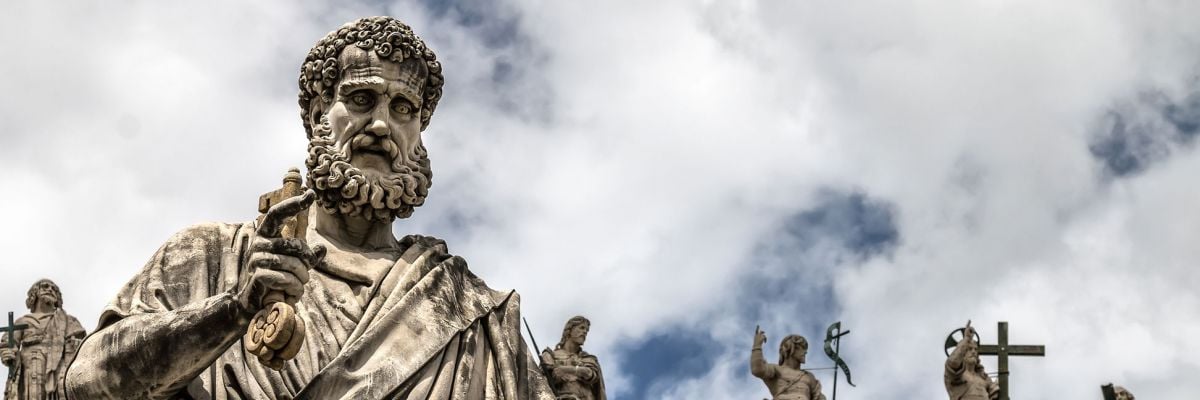
DAY 256
CHALLENGE
“Peter is not the rock Jesus is referring to in Matthew 16:18.”
DEFENSE
The structure of the passage clearly indicates that he is.
In Matthew 16:15–16, Jesus asks the disciples who they say he is, and Peter replies, “You are the Christ, the Son of the living God.” In answer, Jesus gives a threefold response (Matt. 16:17–19), which may be diagrammed as follows:
- Blessed are you, Simon Bar-Jona!
1a. For flesh and blood has not revealed this to you, 1b. But my Father who is in heaven. - And I tell you, you are Peter,
2a. And on this rock I will build my Church,
2b. And the gates of Hades shall not prevail against it. - I will give you the keys of the kingdom of heaven,
3a. And whatever you bind on earth shall be bound in heaven, 3b. And whatever you loose on earth shall be loosed in heaven.The parallelism among these statements indicates that Peter is the
rock that Jesus is discussing.
First, there are the root statements: (1) “Blessed are you, Simon Bar- Jona!” (2) “And I tell you, you are Peter,” (3) “I will give you the keys of the kingdom of heaven.” Each of these is a blessing pronounced on Peter. They would make no sense if the middle statement was read as a way of diminishing Peter as an insignificant stone (see Day 282) in contrast to the much greater rock on which Jesus would build his Church. In that case, the passage would scan as, “Blessed are you Si- mon Bar-Jona! You are very insignificant. Here are the keys to the kingdom of heaven!”
Second, each of the root statements is explained by a pair of follow-up statements (labeled a and b). Thus statement (1) is explained by statements (1a) and (1b), and statement (3) is explained by statements (3a) and (3b). Similarly, statement (2) is explained by statements (2a) and (2b). Thus, the meaning of “You are Peter” is explained by “On this rock I will build my Church” and “the gates of Hades shall not prevail against it.”
This means that Peter is the rock on which Jesus will build his Church, and it is indicated by the parallelism displayed even in the English translation.



